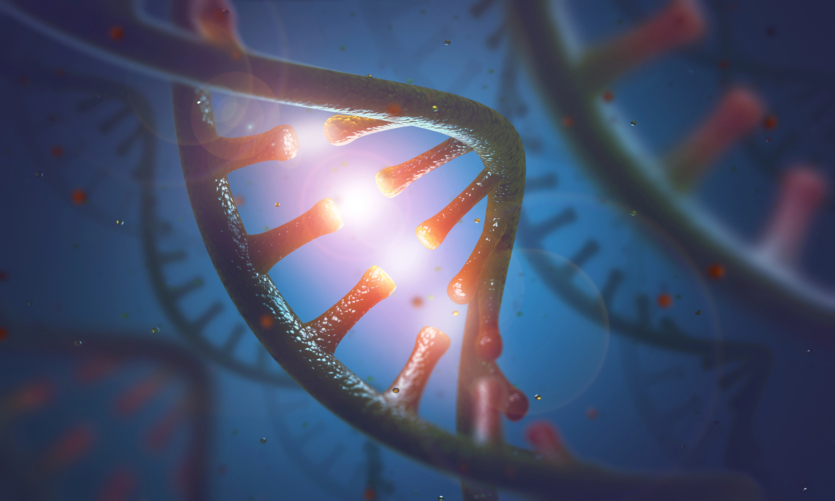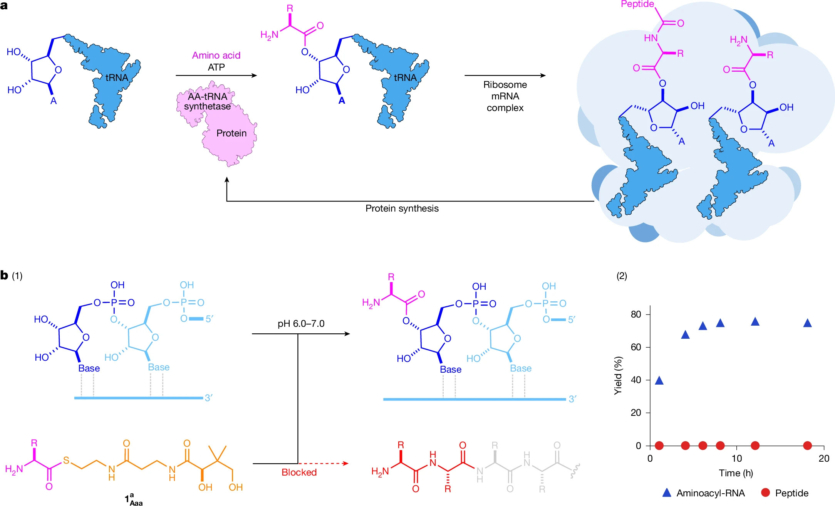
Researchers from University College London have recreated a key stage, in the could have contributed to the emergence of life on Earth almost 4 billion years ago.
In particular, british scientists have demonstrated, how RNA and amino acids could have naturally combined about 4 billion years ago. Amino acids are key components in proteins, providing almost all biological functions. However, proteins cannot copy themselves or generate instructions for self-assembly. These instructions come from RNA molecules, which are closely linked to DNA.
According to the results of the study, scientists have successfully combined amino acids with RNA in conditions, close to those, that existed on our planet about 4 billion years ago. Attempts to do this have been ongoing since the 70s of the last century, but so far they have been unsuccessful.
“Life is about the ability to synthesize proteins — the key functional molecules of life. Understanding the origin of protein synthesis is fundamental to understanding the origin of life. Our study is a major step towards this goal, showing, how RNA may have started to control protein synthesis for the first time”, — explains senior author of the study from the Department of Chemistry at University College London, professor Matthew Powner.
Modern life forms use incredibly complex molecular structures for protein synthesis — ribosome. This requires chemical instructions, that are stored in the matrix RNA. This RNA transfers the gene sequence from the DNA of the cell to the ribosome. The ribosome then reads this RNA and sequences the amino acids together to form proteins.
“We have completed the first part of this complex process, using very simple chemical reactions in pH-neutral water to bind amino acids to RNA. This chemical reaction is spontaneous, selective, and could have occurred on early Earth”, — Matthew Powner said.

Previous attempts to combine amino acids with RNA relied on highly reactive molecules, but these molecules broke down in water and the amino acids began to interact with each other rather than with RNA. In the new study, the researchers used a less aggressive method to convert the amino acids into a reactive form. This involved thioether — a high-energy chemical compound, that plays an important role in many biochemical processes of life and, is believed, to have already played an important role at the initial stage of life development.
“Our study combines two well-known theories of the origin of life — the “RNA world”, in which self-replicating RNA is considered fundamental, and the “thioether world”, in which thioethers are considered to be the source of energy for early life forms”, — Matthew Powner emphasized.
To form these thioethers of amino acids react with a sulfur-containing compound, called pantheine. Last year, the same group of researchers published an article, demonstrating the possibility of synthesizing pantheine under conditions close to Earth’s. This suggests, that this compound could play an important role in in the process of life formation on Earth.
Next, the scientists plan to determine, how RNA sequences bind to the corresponding amino acids, allowing RNA to encode instructions for protein synthesis. As noted by Matthew Powner, before it will be possible to finally explain the emergence of life on Earth, a large number of problems still need to be solved, the most difficult of which is the root causes, that contributed to the synthesis of proteins
“Imagine the day, when chemists can take simple, small molecules made up of carbon, nitrogen, hydrogen, oxygen, and sulfur atoms and use these LEGO pieces to form molecules, that can replicate themselves. This will be a monumental step toward, solving the question of the origin of life. Our research brings us closer to this goal by demonstrating, how two of the primary chemical elements of LEGO (activated amino acids and RNA) could build peptides, short chains of amino acids essential for life. Particularly groundbreaking, is that the activated amino acid, used in this study is a thioester, a type of molecule, formed from coenzyme A, a chemical present in all living cells. This discovery has the potential to link metabolism, the genetic code, and protein synthesis”, — emphasizes the study’s lead author, Dr. Jyoti Singh.
The results of the study are published in the journal Nature
Source: SciTechDaily

Spelling error report
The following text will be sent to our editors: